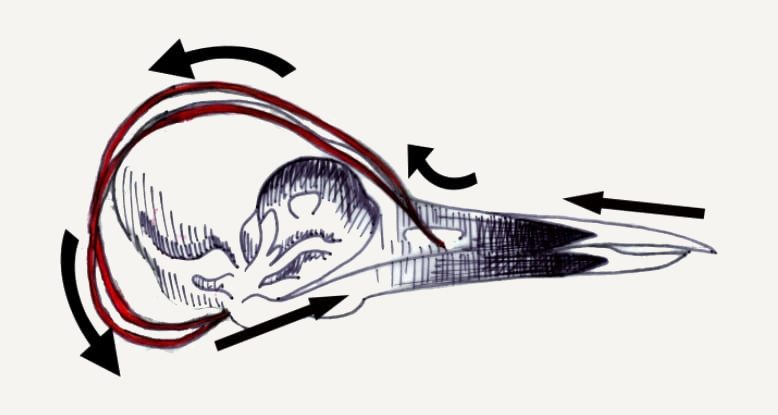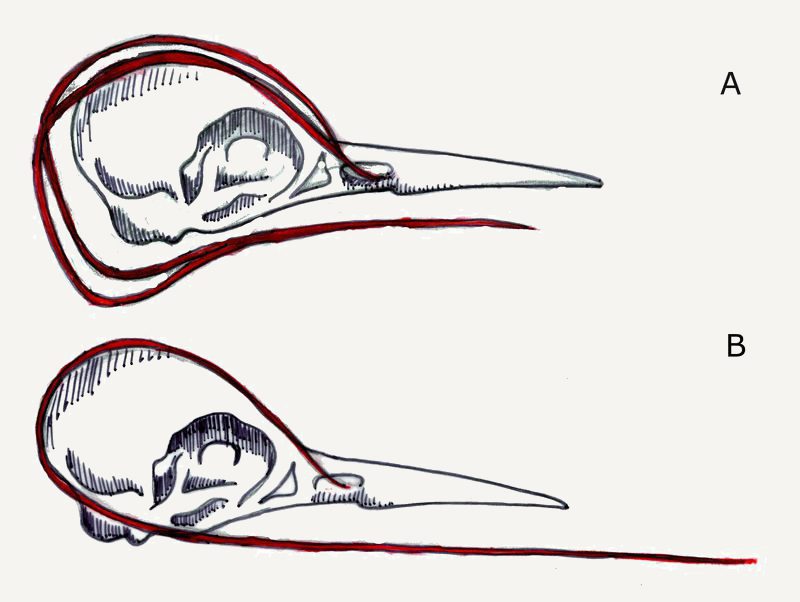The hyoid bone of the golden-fronted woodpecker protects the brain from injury by acting as a securing mechanism for the brain.
[Editor’s Note, 2022: New research from Sam Van Wassenbergh et al. suggests woodpeckers’ “cranial skeleton is used as a stiff hammer to enhance pecking performance, and not as a shock-absorbing system,” and that brains are protected from concussions by their small size. A corresponding update to this page and related pages is pending.]
The high-speed drumming motion of the golden-fronted woodpecker causes a tremendous amount of stressed force on the animal, termed “incident mechanical excitations.” The hyoid bone, located in the bird’s cranium, secures and diverts vibrational forces away from the brain.
The hyoid bone is a strong, flexible bone covered in muscle that allows the woodpecker to extend its tongue out of its beak to grab food. It also serves as an attachment site for muscles around the throat, tongue, and head.
The hyoid bone begins in the nostril of the upper beak, where it divides into two parts between the eyes, and then travels over the top of the skull and around the back. At the base of the skull, the separate pieces rejoin and attach to the muscle of the tongue (see illustration below). The woodpecker not only uses the hyoid bone to gather food for meals, but to protect its brain from neurological trauma. This happens in two ways.
First, when the woodpecker pecks, the muscles surrounding the relaxed hyoid bone contract, propelling the tongue forward inside the beak, and even further when collecting food. This tension stabilizes the cranium and spine, acting as a seat belt to prevent excessive movement of the brain.
Second, the hyoid bone design diverts vibrations (and any forceful impact) away from the cranium. Because of its longer length, the upper beak absorbs more of the shock than the lower beak when striking a surface. The forces then travel up the beak, where they encounter the hyoid bone in the nostril before they hit the spongy bone in the skull. The stress forces then travel along the path of the hyoid bone, rather than continuing to the skull, diffusing into the muscles covering the bone, or traveling to the tongue.
This strategy was contributed by Allison Miller.









